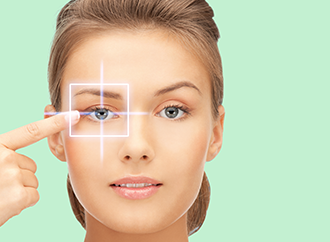
Stages Of Laser Treatment
How is a laser examination performed?
To determine the applicability of laser vision correction to performed with laser treatment, a detailed eye examination must be performed. During the examination, it is necessary to determine the visual acuity and the number of diopters, to make the topography of the cornea, conduct a biomicroscopic examination and, finally, measure the eye pressure.
Age and systemic diseases such as diabetes, goiter, and high blood pressure should be questioned in detail and extended Wavefront or Topolaser examinations should be performed if necessary.
What tests are needed for laser treatment?
With laser treatment, a detailed topographic analysis of the stratum corneum of the eye is carried out using a topographic device, and the thickness of the cornea is calculated. The thickness of the cornea is as important as the diopter.
How is a dilated eye exam performed?
After the instillation of drops that dilate the pupils, and waiting for about 30 minutes, the diopters are again determined and a detailed examination of the eye is carried out (retinal vessels and nerve layers). In the presence of areas with thinning, ruptures, and perforations in the retina, first of all, these gaps are treated with an argon laser. The use of an argon laser may require a delay of up to 3 weeks for laser eye surgery. However, this procedure is necessary before laser vision correction. After preliminary treatment, laser vision correction will be safer and the process itself more comfortable.
What should be considered before laser treatment?
There is no prohibition on eating by a patient who is to undergo laser treatment on the day of treatment.
The patient only:
- Must not wear eye makeup
- Must not use perfume
- Must not take blood-thinning medications
What procedures are performed during laser treatment?
During laser vision correction, first of all, the patient's eyes are covered with a sterile napkin, then, using a specially-made device, the eyelids are opened so that the eyes do not close during treatment. Laser vision correction takes about 4-5 minutes for each eye. Thanks to the applied anesthetic creams, the patient does not feel pain in the process of laser vision correction. It is very important that the patient feels comfortable and follows the instructions during laser vision correction. After laser vision correction, the eyes are not covered with a bandage, but special glasses may be issued to avoid eye sensitivity after laser vision correction.
What should be considered after laser treatment?
After completion of laser treatment, the patient is asked to wait about half an hour and is sent for a follow-up examination. After this control, the patient can leave the hospital. First day: blurred vision, tingling for 3-4 hours, burning and tearing in the eyes are considered normal. It is necessary to carefully follow the recommendations of the ophthalmologist regarding medicines. If you have a headache after laser vision correction, you can take a pain reliever that does not have blood-thinning properties. On the day of the operation, it is not recommended to drive a car and go to work. Avoid being in a dusty environment, the treated eye should not be rubbed, scratched, or touched, and you should not wash or bathe during the first 24 hours. In the early days, you need to make sure that soap and shampoo do not get into your eyes.
Artificial tear drops recommended by an ophthalmologist should be used for approximately 3-6 months after surgery.
Prepared by the Dünyagöz Hospital Editorial Board.
*Page content is for informational purposes only. Consult your doctor for diagnosis and treatment
Update Date: 02.06.2023






